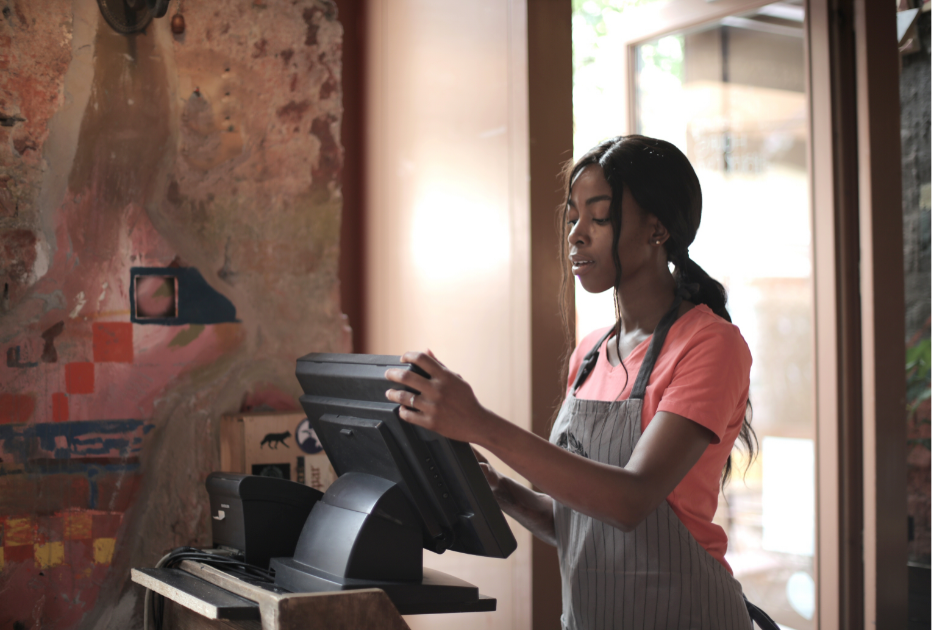What Hollywood gets wrong about corsets, and how the Victorians actually got a tiny waist
Bernadette Banner, a content creator focused of fashion history, breaks down how Victorians were "masters of illusion."

You'll never look at a corset with disdain again.
Usually when we think of corsets, the words suffocation, fainting and shifting organs probably come to mind.
This is certainly what Bernadette Banner has come across in the comments section of her Youtube channel, where she shares all kinds of fashion history education. The general consensus is that Victorian women were either all incredibly tiny or that they went to extremely dangerous lengths to achieve the highly exaggerated signature silhouette of the era, which was to have the bust 10 inches larger than the waist, with the hips 15 inches larger. 34-26-36, for example.
This notion is certainly backed by Hollywood, where we normally see women of that time period being laced up so tightly they can barely breathe, suffering under the crushing weight of whalebone and the patriarchy.
As Banner breaks down in her video below, this is not entirely true. In reality, Victorian women deployed numerous different strategies that are nothing at all like we see in movies. One tactic is, dare I say, shockingly modern.
Tactic #1 Reduction
Okay, so first things first—some women did reduce their waist size through corset use alone. However, Banner notes that this really only worked for those who had a larger, softer, body type. By comparison, people with more athletic or thin body types wouldn’t be able to get much reduction in their waistline, and certainly not without effort, pain and discomfort.“This is something that Hollywood very often misinterprets when it’s presenting historical periods,” Banner says, saying that normally a very thin actress is cast and then corseted down.
Having a naturally thin person in the role isn’t a problem, she adds, as “every body type existed all throughout history.” The real issue is that costume designers try to further reduce their waists with an uncomfortable corset to achieve an hourglass look, rather than augmenting the hips and the bust.
Which brings us to…
Tactic #2 Augmentation
Why cinch when you can stuff, amirite? This strategy is fairly straightforward
Banner demonstrates this by augmenting her own slim silhouette as she puts on a corset pre-padded at the hips and bust (though padding over the corset was also done…fashion is eternally nuanced). Since the corset is actually very flexible, she can also breathe and move easily.
From here, women would add in frills, fluffs, bustle and petticoats of varying sizes to get the desired ratio.
Tactic #3 Illusion
We’ve discussed clever placements of what goes on under the dress. But Banner explains that Victorians would also create an illusion of an hourglass with their outer garments as well. It’s not coincidence that this time period is when we had the “largest skirts in history,” Banner says. But it’s not just fluffy skirts—there were also puffy sleeves, elongated shoulder lines or shoulder padding, and special jackets, coats and belts to “trick the eye into seeing a very specific shape.”
Banner again demonstrates this scheme as she puts on her skirt with a tight waistband and wide, flat sash. Though with all the layering her waist is about an inch larger than it was before, it nonetheless looks smaller. The contrast is evident when she throws on the blouse and skirts sans the “sculptural understructures.”
Tactic #4 Image Manipulation
That’s right. You thought Photoshop was a new concept? Guess Again!
The ability to manipulate an image has been around almost as long as photography itself, and was “profuse in the late 19th century,” Banner says. Everything from waist shape to facial features to even skin texture could be altered.
And now the real question: Why do we think all Victorian women were tiny?
Banner answers that too. A major reason is the number of tiny garments that have survived from the time period. However, these pieces probably were only worn by young girls for a shorter amount of time, therefore endured less wear and tear.
In conclusion, Victorians were not ubiquitously impossibly small. They were simply masters of illusion, who created a mirage so convincing we still believe it today.
Heightened beauty standards still exist today—the rising popularity of cosmetic procedures is a clear indicator of that. While this might not inherently be a good or bad thing, more and more women are risking their health (not to mention their finances) in order to achieve that which is physically impossible. Banner argues that folks in the 21st century can perhaps take a lesson or two from Victorian women when it comes to achieving seemingly impossible aesthetic ideals without causing oneself harm.
As she astutely put it, “History teaches us that there are other options.”
You can find even more of Banner’s fascinating fashion history videos on Youtube.- In 1889, a British newspaper asked women why they were 'spinsters' and the responses were incredible ›
- Unearthed BBC interview features two Victorian-era women discussing being teens in the 1800s ›
- 17 stunning photos of black Victorians show how history really looked. ›
- It took a long time to get dressed in the 1850s - Upworthy ›
- Man time travels through 12,000 years of high-fashioin - Upworthy ›
- First phonograph recordings capture famous Victorian voices - Upworthy ›
- GE co-founder talks about life growing up in the 1860's in unearthed video - Upworthy ›




 Beaver on riverbank.
Beaver on riverbank.  Pbs Nature Swimming GIF by Nature on PBS
Pbs Nature Swimming GIF by Nature on PBS  An actual beaver dam on the now-thriving Price River
An actual beaver dam on the now-thriving Price River 
 Who doesn't love Pluto?
Who doesn't love Pluto?  Pluto agrees.
Pluto agrees. 
 Woman in denim jacket covers face with sleeve, standing outdoors with blurred background.
Woman in denim jacket covers face with sleeve, standing outdoors with blurred background. Woman with outstretched arms in a sunlit field, enjoying the outdoors.
Woman with outstretched arms in a sunlit field, enjoying the outdoors. Lush forest with vibrant green and orange foliage in soft, misty sunlight.
Lush forest with vibrant green and orange foliage in soft, misty sunlight. Friends laughing and drinking coffee at a cozy cafe table.
Friends laughing and drinking coffee at a cozy cafe table. Woman with curly hair in sunlight, eyes closed, wearing a purple top.
Woman with curly hair in sunlight, eyes closed, wearing a purple top. Man smiling with hand over face, standing outdoors against a blue sky background.
Man smiling with hand over face, standing outdoors against a blue sky background. Hand painting a still life on canvas with blue and orange tones.
Hand painting a still life on canvas with blue and orange tones. Woman sitting on a chair in the water, writing in a notebook at sunset.
Woman sitting on a chair in the water, writing in a notebook at sunset.
 "Bought an espresso machine, took some time to learn how to dial it in and pull a proper shot."
"Bought an espresso machine, took some time to learn how to dial it in and pull a proper shot." "Frozen meals are just as unhealthy, but much cheaper."
"Frozen meals are just as unhealthy, but much cheaper." "I’ve embraced the gray!"
"I’ve embraced the gray!"  "Bidet toilet seat is cheap, easy to install, much easier and faster to use."
"Bidet toilet seat is cheap, easy to install, much easier and faster to use."
 American portion sizes are colossal.Canva Photos
American portion sizes are colossal.Canva Photos American public restrooms aren't very private.Canva Photos
American public restrooms aren't very private.Canva Photos Cashiers in America stand all shift long.Canva Photos
Cashiers in America stand all shift long.Canva Photos America loves the Pledge of Allegiance.Canva Photos.
America loves the Pledge of Allegiance.Canva Photos. Cosmetic surgeries on pets are...a choice.Canva Photos.
Cosmetic surgeries on pets are...a choice.Canva Photos. America loves extra sugar in savory foods.Canva Photos.
America loves extra sugar in savory foods.Canva Photos.